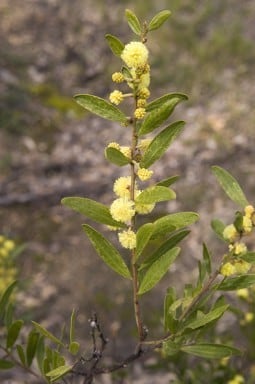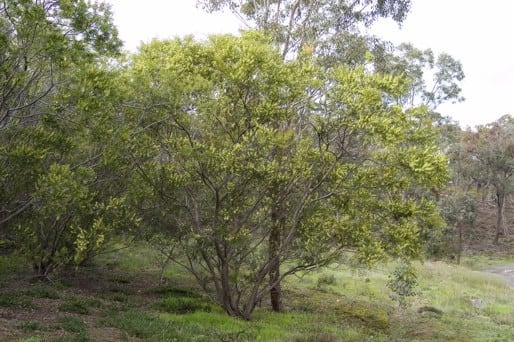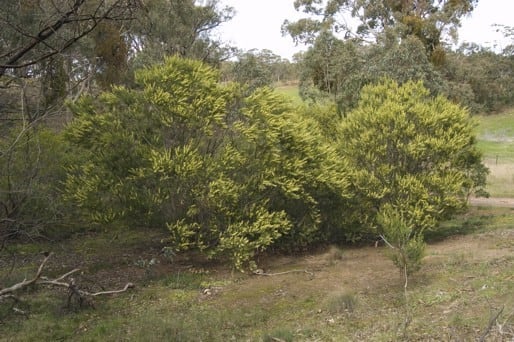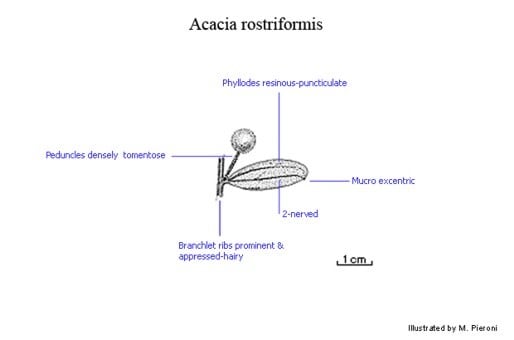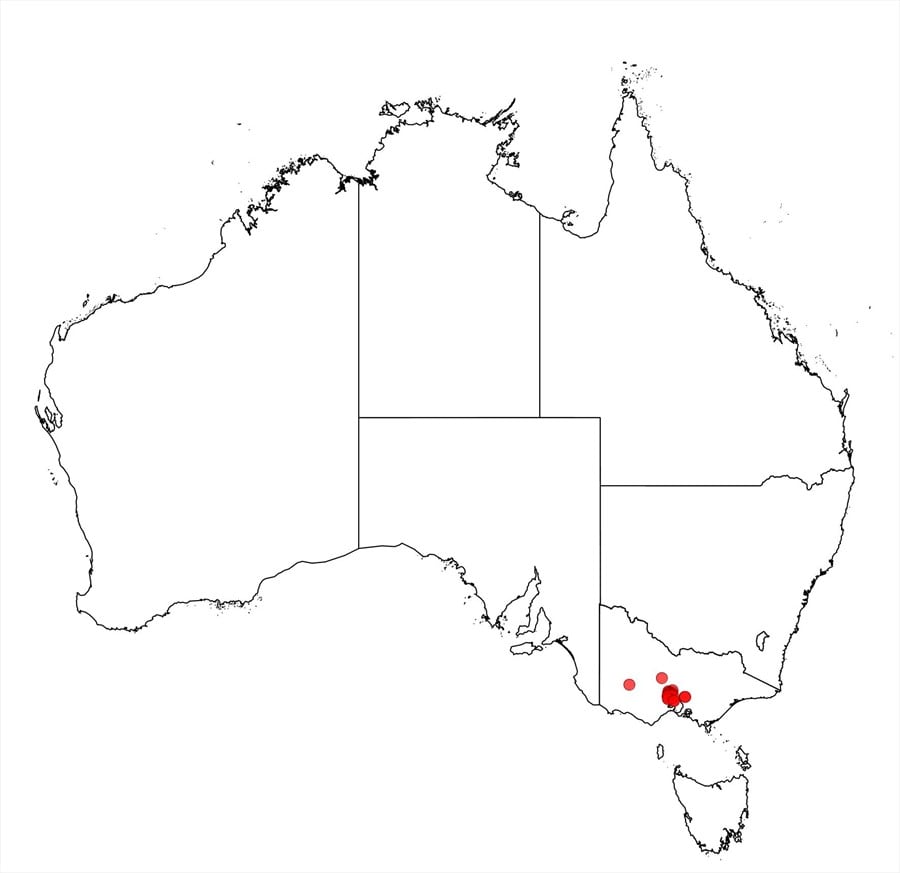Acacia rostriformis Maslin & D.J.Murphy
WATTLE
Acacias of Australia
Common Name
Bacchus Marsh Wattle
Family
Fabaceae
Distribution
Endemic in Vic. where it is confined to a small area around Bacchus Marsh (Lerderderg Gorge, Long Forest Nature Conservation Reserve, Coimadai and Balliang) with an outlier population from Werribee.
Description
Slightly aromatic, obconic, dense shrub 1–6 (–8) m tall. Branchlets not flexuose, angled towards extremities but aging terete, prominently ribbed, the ribs appressed-puberulous, rather broad and commonly yellow, the inter-rib region darker coloured and not obviously resinous. Stipules caducous. Phyllodes narrowly elliptic to oblong-elliptic, sometimes oblanceolate or ±lanceolate, 20–45 (–60) mm long, (3–) 5–10 (–13) mm wide, generally wide-spreading, slightly shiny, resinous-puncticulate, normally appressed-puberulous on margins and main longitudinal nerves, 2-nerved per face, lateral nerves few and obscure; apices obtuse to sub-acute, excentrically mucronate, rostriform and often sub-uncinate; gland 0–1 mm above pulvinus. Inflorescences simple, 1–3 (–5) per axil; peduncles (3–) 5–9 (–10) mm long, densely tomentose with short, crisped or curved, normally spreading hairs; basal peduncular bract persistent, navicular-cucculate, 2–3 mm long; heads globular or slightly obloid, 6–7 mm diam. when dry, densely 25–30-flowered, lemon yellow; bracteoles not prominent in mature buds, acute to short-acuminate. Flowers 5-merous; sepals united almost to their apices. Pods linear to narrowly oblong, 35–80 mm long, 3–5 mm wide, firmly chartaceous to thinly coriaceous, densely appressed-puberulous when young, indumentum sparser with age. Seeds longitudinal, oblong, 3.5–4.7 mm long, dark brown or black; arillate.
Phenology
Flowers late Aug. to early Oct.; probably fruits Dec.–Feb.
Habitat
Grows in low hilly country on brown clay in eucalypt woodland. Occurs as discontinuous populations within a region that has been extensively cleared for agriculture, but is common in the places where it is found.
Specimens
Vic.: Werribee Gorge, A.C.Beauglehole 39928 (MEL); between Bacchus Marsh and the Brisbane Ra., B.R.Maslin 3497 (CANB, PERTH); in Australia felix [most probably collected from Bacchus Marsh], Sept. 1852, F.Mueller 49 (MEL).
Notes
It is rather surprising that there are relatively few contemporary collections of this species which grows only about 50 km E of Melbourne, and although geographically restricted it is a showy plant that is common in the places where it occurs. It was first collected in September 1852 by F.Mueller. See B.R.Maslin and D.Murphy, Muelleria 27: 212 (209) for discussion.
Referred to as the fourth variant of A. verniciflua by B.R.Maslin, Fl. Australia 11A: 597 (2001). This species is characterized by its rostriform, excentrically mucronate phyllode apices and densely hairy pods (at least when young). It appears to be most closely related to the allopatric, geographically restricted Vic. endemic, A. exudans. Sometimes resembles A. leprosa var. graveolens which is normally distinguished by its peduncles being less densely hairy with hairs normally appressed or sub-appressed; however, in the fourth variant of var. graveolens from the King Lake–Marysville area in Vic., the peduncles sometimes have dense, spreading hairs. Also sometimes superficially resembles A. montana.
FOA Reference
Flora of Australia Project
Author
B.R.Maslin
This identification key and fact sheets are available as a mobile application:
URL: https://apps.lucidcentral.org/wattle/
© Copyright 2018. All rights reserved.
